Frieze depicting the event of Holy Week and of Christ's PassionThe frieze runs from the left lintel to right lintel of the tympana and connects across the colonnades. |
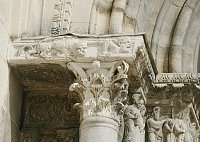
|
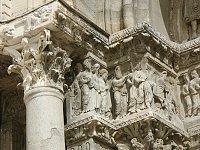
|
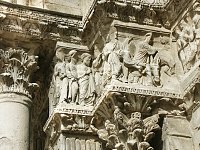
|
| |
|

|

|
Preparation for the Entry into JerusalemThis scene wraps around the corner and begins at the far left edge. This frieze then joins up with the depiction of the entrance into Jerusalem which occupies the lintel under the left portal tympanum. The clearest narrative event here is the bent-over apostle's untying of the donkey. It has been tied to a post and Jesus prepares to mount this small animal. |
| |
|
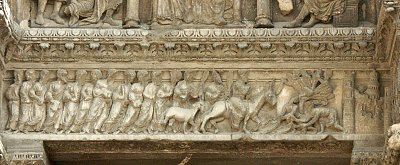
|
The Entry into JerusalemAll four Gospels describe this event although a few details vary. It is the first scene in the cycle of the Passion. Jesus, somewhat right of center, rides the small donkey with the foal following behind its mother; the apostles follow as well, some carrying palm fronds. |
| |
|
Details of the EntryThe city gate is at the far right and two persons spread cloaks on the ground before Christ. Several people are visible inside the city gate. This representation, of course, follows the double scale of much medieval art--the architecture is much too small in reality for the figures.
O'Meara relates this biblical scene to a contemporary historical context. She explains that the eastern gate of the city of Jerusalem is depicted and concludes that "the architectural exactitude of this scene, then, serves as a visual reminder which helps to draw closer the analogy between the triumphal entry of Christians into Jerusalem in a Crusade and the gospel prototype for this event, the triumphal entry of Christ into Jerusalem on Palm Sunday" (138). |
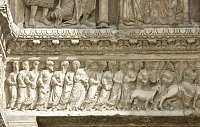
|
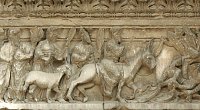
|
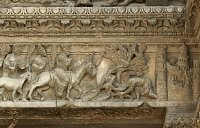
|
| |
|
Around the corner: people from Jerusalem walk toward the gates on the lintelTwo of these citizens carry palms while another carries a much smaller branch. The boy in front is preparing to climb a short tree. (This looks like a boy and not Zacchaeus, the rich tax-collector, who being small, climbed a tree to observe the event. He is barely visible at the far right of the lintel in the branches of the tree. See above.) |

|
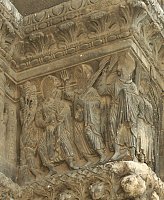
|


 Go to Saint-Gilles Index.
Go to Saint-Gilles Index. Click here to return to index of art historical sites.
Click here to return to index of art historical sites.
 Click here to return to index of artists and architects.
Click here to return to index of artists and architects.
 Click here to return to chronological index.
Click here to return to chronological index.
 Click here to see the home page of Bluffton University.
Click here to see the home page of Bluffton University.

